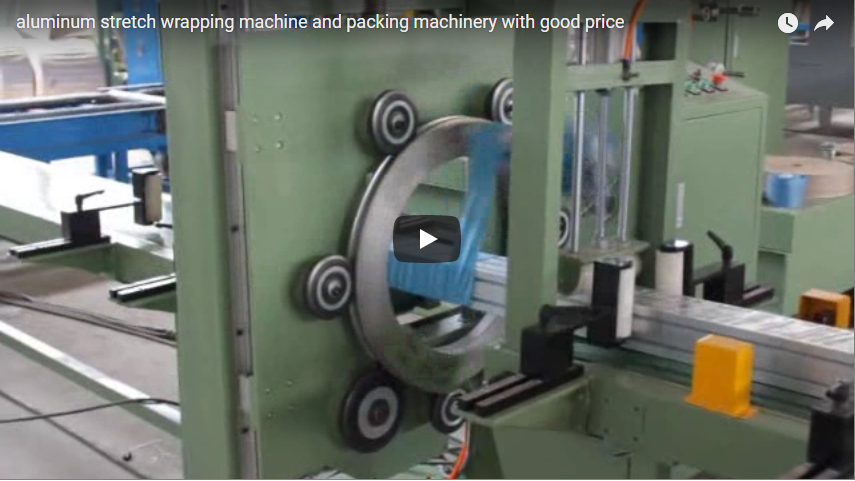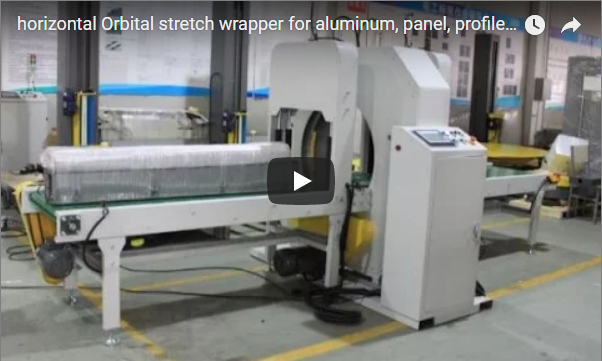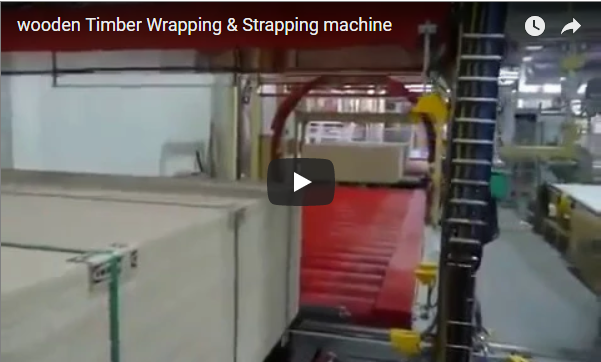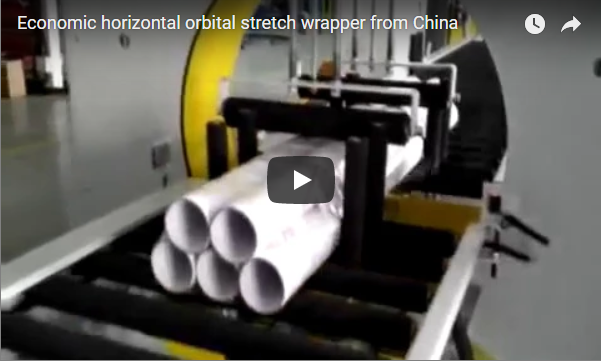Mastering Profile Protection: A Deep Dive into the Aluminum Horizontal Wrapping Machine with Automated Spacer Feeder
Handling and packaging long, potentially delicate items like aluminum extrusions, profiles, pipes, or timber presents unique challenges. Surface scratches, bending, and damage during transit are common headaches that can lead to costly rejects and customer dissatisfaction. A highly effective solution gaining traction across industries is the Aluminum Horizontal Wrapping Machine, particularly models equipped with an integrated Spacer Feeder. This article delves into the technology, benefits, and practical considerations of this specialized industrial packaging equipment.
1. The Challenge: Protecting Elongated Products
Standard pallet wrapping methods often fall short when dealing with long items. Manually wrapping such products is time-consuming, inconsistent, and offers limited protection, especially against impact or abrasion between pieces in a bundle. Aluminum profiles, in particular, with their specific finishes and tight tolerances, demand a more sophisticated approach. This is where horizontal orbital wrapping technology comes into play.
2. Core Technology: The Horizontal Orbital Wrapping Process
Unlike traditional turntable wrappers, a horizontal orbital wrapper keeps the product moving linearly on a conveyor while a ring carrying the stretch film rotates around the product.
- Product Feed: Items are fed onto motorized infeed conveyors, often equipped with guides or rollers to maintain alignment.
- Rotating Ring: The core of the machine is a robust ring that holds the film carriage. As the product passes through the ring's opening, the ring spins, dispensing the stretch film.
- Film Carriage: This unit holds the roll of stretch film and typically includes a pre-stretch mechanism. Pre-stretching optimizes film usage (yielding more wraps per roll) and increases the holding force on the product.
- Wrapping Cycle: The film is automatically attached at the beginning of the product, wrapped helically along its length as it conveys through the rotating ring, and then automatically cut and secured at the end.
- Control System: Modern machines utilize PLC controls with user-friendly HMIs (Human-Machine Interfaces) for setting parameters like ring speed, conveyor speed, film tension, and wrap overlap.
3. The Critical Role of the Automated Spacer Feeder
For products susceptible to surface damage from contact with each other (like painted or anodized aluminum profiles), simple stretch wrapping isn't enough. This is where the Spacer Feeder becomes invaluable.
- Function: This integrated module automatically inserts protective spacers (often made of cardboard, foam, or plastic) at predetermined intervals between the layers or individual pieces before they enter the main wrapping ring.
- Mechanism: Typically, a hopper holds a stack of spacers. A pneumatic or servo-driven mechanism picks a spacer and precisely places it onto the product or bundle as it moves along the conveyor. The placement is synchronized with the product's movement and the wrapping cycle.
- Benefit: From our experience, incorporating automated spacing significantly reduces scratches, abrasions, and impact damage that can occur when wrapped items shift during handling or transit. It ensures products arrive at their destination in pristine condition, maintaining their value and appearance. It also allows for safer, more stable stacking.
4. Key Features & Technical Specifications to Consider
When evaluating an aluminum horizontal wrapping machine with a spacer feeder, consider these aspects:
- Construction: While the title mentions aluminum, the frame is often robust steel for stability, potentially with aluminum components where weight saving is beneficial. Look for heavy-duty construction suited to industrial environments.
- Ring Diameter: Must accommodate the maximum cross-section of your product or bundle.
- Ring Speed: Variable speeds (measured in RPM) allow adjustment for different product types and required throughput.
- Conveyor System: Speed control, type (belt or rollers), load capacity, and height adjustment are important.
- Film Pre-Stretch: Look for powered pre-stretch systems (e.g., 150-300%) for film economy and load security.
- Spacer Feeder:
- Spacer Material Compatibility & Size Range
- Hopper Capacity
- Placement Accuracy & Adjustability (interval setting)
- Actuation Method (Pneumatic, Servo)
- Control System: PLC brand, HMI size and features, recipe storage for different product setups.
- Safety Features: Emergency stops, safety guarding, light curtains.
5. Operational Advantages & Return on Investment (ROI)
Investing in this technology yields significant benefits:
- Enhanced Product Protection: Drastically reduces damage rates, associated costs, and customer claims. The combination of tight wrapping and protective spacing is key.
- Increased Throughput: Automates a previously manual or semi-automatic process, significantly boosting packaging speed and overall efficiency.
- Labor Savings: Reduces the manual labor required for wrapping and spacer placement, freeing up personnel for other tasks.
- Material Savings: Optimized film usage through pre-stretch mechanisms lowers consumable costs. Automated spacing prevents waste compared to manual insertion.
- Improved Load Stability: Tightly wrapped bundles with spacers are more stable and easier to handle, store, and transport.
- Professional Presentation: Consistently wrapped products project a higher quality image.
6. Typical Applications
These machines are ideal for industries handling:
- Aluminum Extrusions (window/door profiles, architectural elements)
- Plastic Profiles and Pipes
- Timber and Lumber Products
- Metal Tubing and Bars
- Furniture Components
- Textile Rolls
7. Making the Right Choice
Selecting the appropriate machine involves assessing:
- Product Dimensions: Minimum and maximum length, width, and height.
- Product Weight: Ensure conveyor and machine structure can handle the load.
- Required Throughput: Match machine speed capabilities to your production needs.
- Spacer Requirements: Type, size, and frequency of spacer placement.
- Integration: Will it be a standalone unit or integrated into a larger production line?
- Budget: Consider the total cost of ownership, including maintenance and consumables.
Conclusion
The Aluminum Horizontal Wrapping Machine with Spacer Feeder represents a sophisticated and highly effective solution for packaging long, sensitive products. By combining the secure containment of orbital stretch wrapping with the crucial protection offered by automated spacer insertion, businesses can significantly enhance product integrity, boost operational efficiency, and reduce packaging costs. It's a valuable investment for any operation looking to streamline its end-of-line packaging process for profiles, pipes, and similar elongated items.
For more detailed specifications or to discuss how this technology can be applied to your specific products, explore our range of horizontal wrapping solutions:
https://www.fhopepack.com/Horizontal_wrapping_machine.html
Or contact us directly at: info@fhopepack.com






